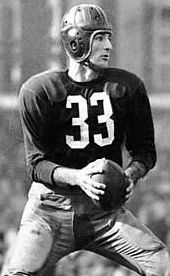Let’s take completion percentage. The passer rating formula measures completion percentage by taking a passer’s completion percentage, subtracting 30%, and multiplying the result by five. This made sense when the average completion percentage was around 50%; in that case, 50% minus 30% equals 20%, and multiplying that by 5 gives a result of 1.00.
To adjust for era, we replace “30%” in that formula with “league average minus 20%.” So in 2018, the league average completion percentage was 64.9%, which means we would use 44.9% for this formula. Drew Brees completed 74.4% of his passes; if we subtract the baseline from his result, we get 29.5%. Multiply that result by 5, and Brees gets a completion percentage score of 1.48 for 2018.
If we do this for every quarterback in every season of his career, and then weight each season by his number of pass attempts, we can get career grades. This is one way to come up with career completion percentages adjusted for era.
The overwhelming champion in this regard is Sammy Baugh, who led the NFL in completion percentage 8 times during the decade of the ’40s. As recently as 1975, Baugh was still 4th all-time in career completion percentage, and less than 1% off of the leader. Baugh has a rating of 1.58, which means on average he was better at completing passes relative to his era than Brees was in 2018.
The top passers in measuring completion percentage this way are Baugh followed by a who’s who of the completion percentage kings: Len Dawson, Otto Graham, Steve Young, Joe Montana, Sid Luckman, and Drew Brees.
The bottom 5? Rex Grossman, Jay Schroeder, Doug Williams, Mike Pagel, and the man at the very bottom of the list is… Derek Anderson. [continue reading…]

